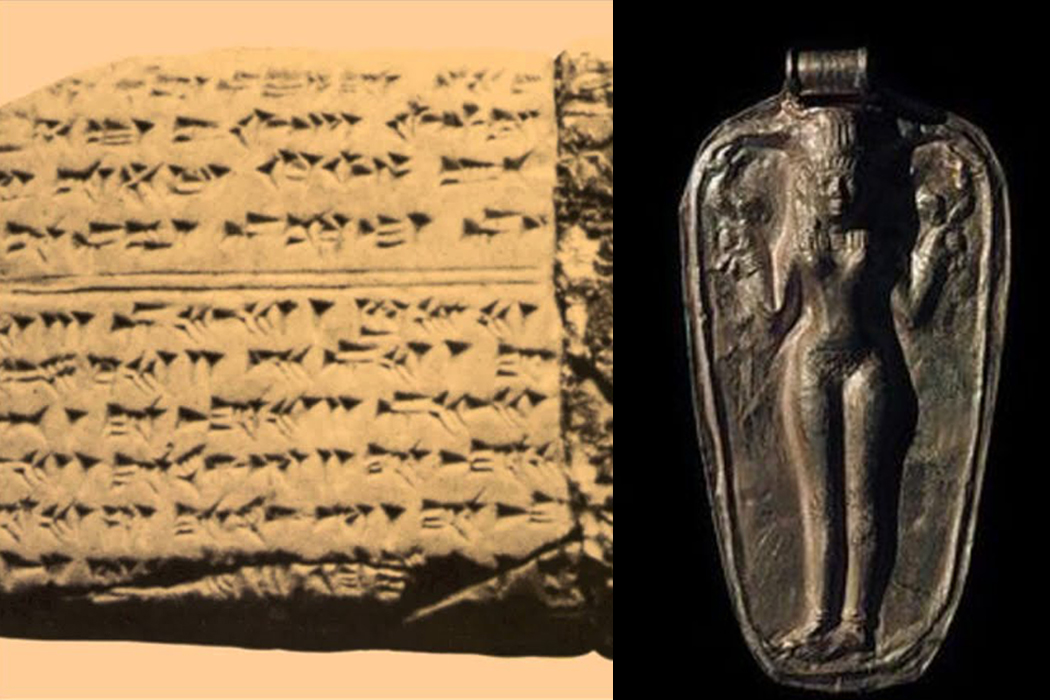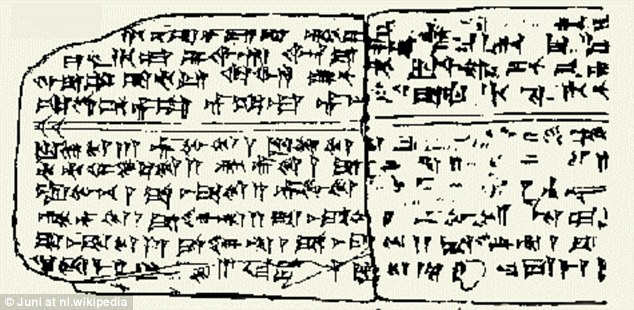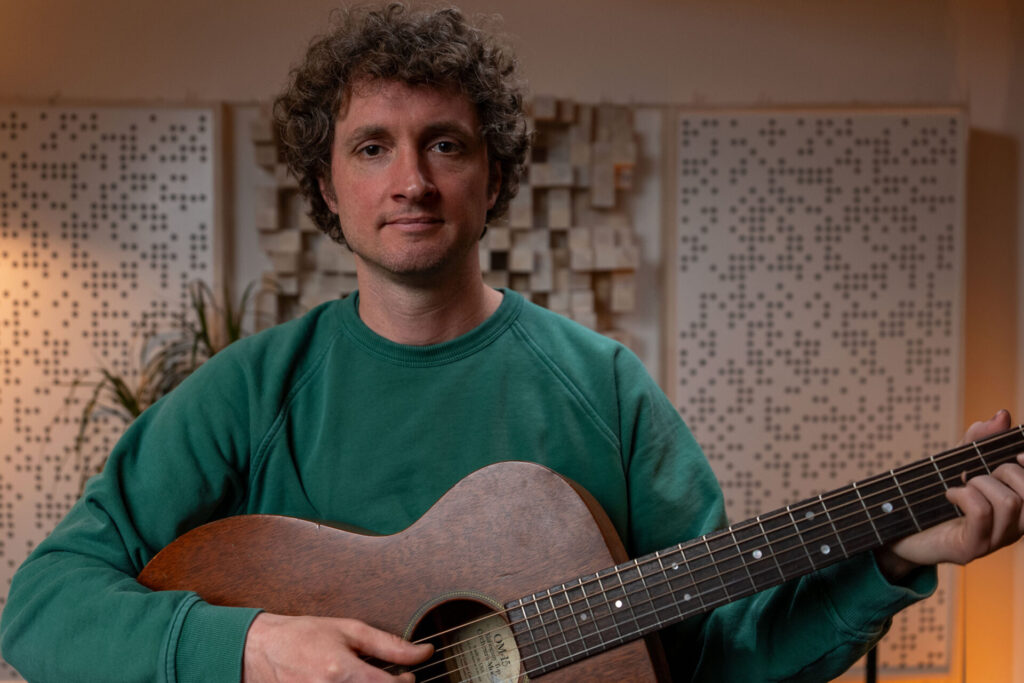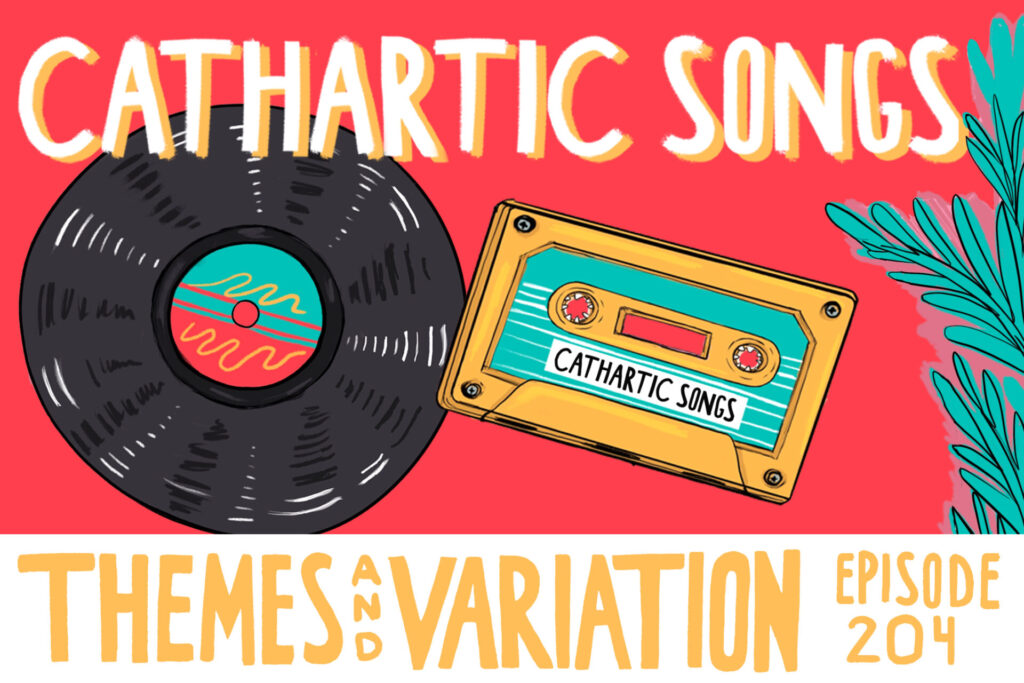
+ Welcome to Soundfly! We help curious musicians like you meet your goals with creative online courses. Whatever you want to learn, whenever you need to learn it. Subscribe now to start learning on the ’Fly.
It’s often said that songwriters need to strive to be the first to say or do something, or otherwise be the best or most unique at saying it. Music, in some form, has been around for at least 35,000 years, so being the first to say pretty much anything would certainly be a feat.
Knowing that, how old human music is, has led many to wonder what exactly the first song ever written was. While the actual first song may be lost to time, researchers have discovered the oldest song to be preserved in its entirety — which includes its notation!

The melody, known as “Hurrian Hymn no. 6,” is thought to be from around the 14th century B.C.E. To give you an idea of just how old it is, it predates the use of the Gregorian Calendar (the system we actually still use today).
So what’s it about?
Unrequited love? Partying on a Saturday night? Perhaps a melancholy ballad about the good old days?
Not quite. Although translations differ, it appears to have been a religious song honoring Nikkal, the goddess of orchards. Aside from the obvious religious importance, the song actually appears to have had another significance; it was apparently used in wedding rituals!
Let’s listen to an interpretation here, and unpack the song’s assumed meaning below.
Anyone listening to the song, at the time of its usage, would have called to mind the marriage of Nikkal to Yarih, God of the Moon. In the myth, they were smitten with each other — Yarih offering her father thousands in gold, silver, and lapis lazuli to convince him to let Yarih wed her. Clearly this would be culturally significant to a couple being wed in this area at the time, and possibly even relatable; at least as far as being smitten with each other is concerned.
Its cultural significance may also help explain why it survived for so many thousands of years! It wasn’t simply a flash-in-the-pan pop song, known only to a certain generation or popular for a few months. It would have been a well-known tradition to most people in that area who even thought about getting married: grandparents, parents, and children.
What we basically have unearthed is the world’s oldest wedding song. Let’s talk about that “area” now.

The tablet was discovered in the 1950s in what is now modern day Syria, written in Hurrian — the language of an ancient and now-extinct culture. This presented quite a few difficulties in translation, namely the fact that the Hurrian language was essentially dead and has no obvious modern corollary. Although that it was written in a form of Cuneiform made it eventually possible to decipher to some manageable degree.
Researchers believe they have been able to piece together the song’s meaning, and likely its cultural context, over the years. Adding to the difficulty though, the tablets that contain the song were made of clay, which obviously has a tendency to crumble and erode over time.
In fact, “Hurrian Hymn no. 6” was in fragments when it was unearthed.
One translation suggests these are the lyrics, which don’t exactly roll off the tongue in English:
For the ones that are offering to you, prepare two offering loaves in their bowls, when I am making a sacrifice in front of it.
They have lifted sacrifices up to heaven for (their) welfare and fortune (?).
At the silver sword symbol at the right side (of your throne) I have offered them.
I will nullify them (the sins). Without covering or denying them (the sins), I will bring them (to you), in order to be agreeable (to you).
You love those who come in order to be covered (reconciled).
I have come to put them in front of you and to take them away through a reconciliation ritual. I will honour you and at (your) footstool not….
It is Nikkal, who will strengthen them. She let the married couples have children.
She let them be borne to their fathers.
But the begetter will cry out: “She has not born any child!” Why have not I as a (true) wife born children for you?”
One of the coolest things about this discovery is the notation system in tow. Unfortunately, it too is still a little bit of a mystery.
The song predates staff notation, and there was no international standard of tuning as there is today. Although the notation is in fact pretty detailed, telling the musician which string to hit (string one, string three, etc.), this is complicated by the fact that other, different notation is included underneath.
Is one note meant to be sung and one to be played? Are these two notes meant to be played together while the words are spoken over them? Was it simply an old key change or notes some other musician wrote over the existing music?
These questions have left researchers (and subsequent musicians who attempted to cover the song) scratching their heads and coming up with different variations. Of course, musicians have geeked out over the discovery and tried to interpret and play it in myriad ways.
Thanks to many Cuneiform scholars and music transcribers like Salim George Khalaf, you can find a modern interpretation of the sheet music here, and learn to play the song yourself!
It is a fascinating subject to ponder how early cultures may have developed music – and what tunings, instrumentation, and traditions may have surrounded it. “Hurrian Hymn no. 6” — along with other ancient songs that have been unearthed — provides us with a small window into music distant and murky historical beginnings.
Improve all aspects of your music with Soundfly.
Subscribe here to get unlimited access to Soundfly’s premium course content, an invitation to join our private Slack community forum, exclusive perks from partner brands, and massive discounts on personalized mentor sessions for guided learning. Learn what you want, whenever, with total freedom.




